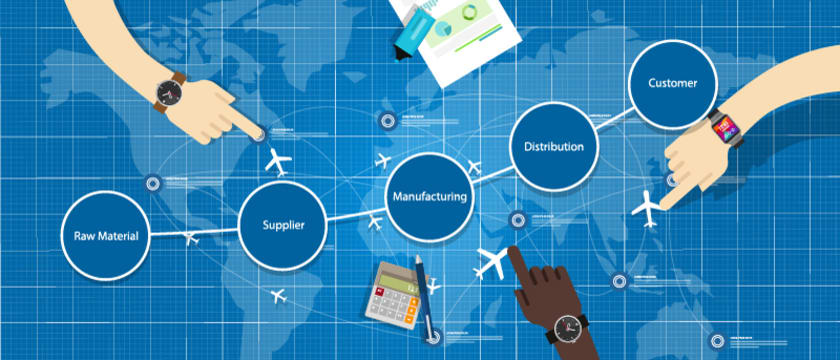How to Improve Offline Supply Chain Management?



Summary: Maximizing the efficiency of your offline supply chain can have a significant impact on your business operations. By analyzing data, adopting new technologies, and implementing strategic changes, you can streamline your supply chain process and reduce costs. Discover the expert tips and best practices for optimizing your offline supply chain and boosting the success of your business.
Effective offline supply chain process management is crucial for the success of any business. It involves the systematic planning, coordination, and control of the flow of goods, services, and related information from the point of origin to the point of consumption. In this article, we bring up the key strategies and tactics for improving your offline supply chain management.
Digital vs. Traditional: Exploring the Key Differences in Online and Offline Supply Chain Management
- Online and offline supply chain management are systems and processes that involve the coordination and control of goods, services, and information from their origin to consumption. One main difference is the use of technology. Online supply chain processes involve digital technologies such as e-commerce platforms, data analytics, and logistics software for inventory management.
- Online supply chain processes rely on automation and digitization of the processes, while offline supply chain management relies more on traditional, non-digital methods, and on-the-go business decisions based on intuitive practices, enhanced communication, and experience in leadership roles.
- Another difference is the level of transparency and visibility; online supply chain management allows for greater visibility and transparency through accessible, trackable digital systems, while offline supply chain management may have difficulty with this due to manual processes. But manual processes use first-hand information, which is reliable and vetted, to make decisions while online supply chain management relies heavily on data provided by third parties and aggregators.
- The speed and flexibility of the supply chain processes are lightning-fast with big data analytics and automated monitoring making them more responsive to changes in demand. Offline supply chain management may be slower to adapt but relies on the human element and uses personal communication channels to gain insight and priceless information about internal operations and competitor moves.
Maximize Your Supply Chain Potential: Top Strategies for Improving Offline Management
There are several key strategies that businesses can use to improve their offline supply chain management:
- Timely evaluation of processes by using quality metrics: To improve your offline supply chain management, it's crucial to analyze your current processes and identify areas for improvement. By collecting and analyzing information in your supply chain, you can identify specific areas that may be causing inefficiencies and bottlenecks. Go for a good metric system with proper weight distribution that allows a fashion brand to evaluate supplies, follow through with risk assessment, and draft a competitive pricing policy.

- Clear communication channels for accessibility and transparency: When you are in the role of a supply chain manager, your priority is a timely and reliable flow of information. This calls for exceptional managerial skills where you create an open environment that encourages your peers and juniors to share. A management with a problem-solving attitude will win the trust of employees. Accessibility and transparent policy making and implementation allow better interdepartmental coordination, which results in a robust offline supply chain process.
- Build strong relationships with suppliers and partners: Effective communication and strong partnerships with suppliers are crucial for ensuring the resilience and adaptability of your offline supply chain. By establishing direct lines for communication and implementing supplier performance metrics, you can foster strong relationships with your partners and build resilient supply chain processes that can adapt to changing conditions.
- Be proactive in addressing potential problems: Proactive planning and preparation can help your business stay ahead of potential bottlenecks and disruptions in your offline supply chain. By implementing contingency plans, diversifying your supplier base, and optimizing inventory levels, you can ensure that your supply chain is ready to handle any unexpected challenges that may arise.
- Continuously monitor and assess your supply chain: To maintain a smooth-running and efficient offline supply chain, it's important to regularly review and analyze your operations. By doing so, you can identify areas where you can make further improvements and ensure that your supply chain is operating at its best. Regularly reviewing and analyzing your supply chain can help you identify inefficiencies, optimize processes, and stay ahead of potential disruptions.
Streamline your offline supply chain and boost business success

Online and offline supply chain management differ in their use of technology, level of transparency and visibility, and speed and flexibility. While online supply chain management utilizes digital technologies and allows for greater visibility and agility, offline supply chain management relies more on traditional methods of interpersonal communication skills, inter-departmental coordination, and flexible managerial skills.
To improve offline supply chain management, businesses can analyze their current processes, implement new technologies for information sharing, build strong relationships with partners, and continuously monitor and evaluate their supply chain.
Businesses looking to optimize their supply chain processes can connect with Fashinza.
Our extensive network of global trading partners enables us to offer competitive prices for all your offline supply chain management needs.
Contact us to know more about offline supply chain management in the clothing and apparel industry.
Key Takeaways
- Analyzing current processes and implementing new technologies can help improve offline supply chain management.
- Building strong relationships with suppliers and partners, being proactive in addressing potential problems, and continuously monitoring and assessing the supply chain are key strategies for improving offline supply chain management.



















